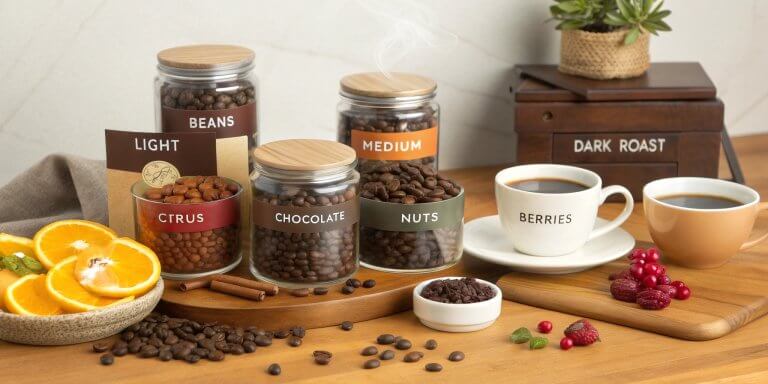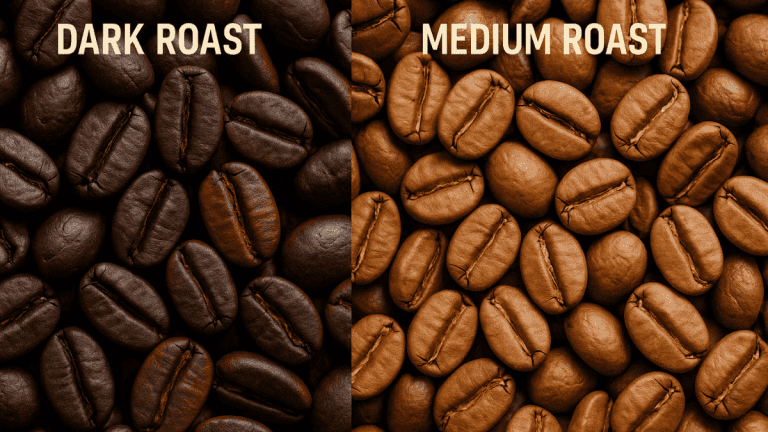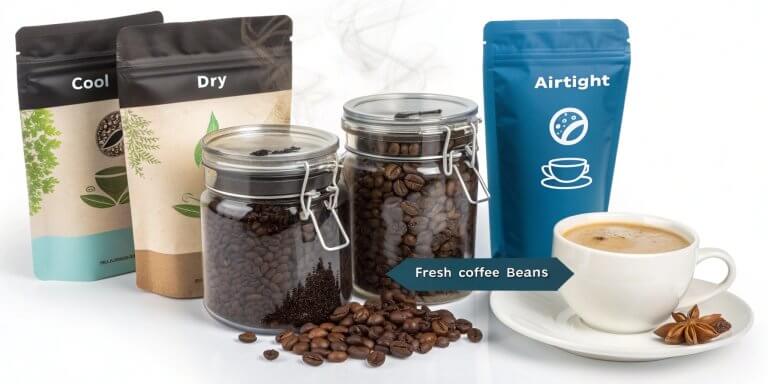
Are you prepared to elevate your coffee obsession? Have you considered eating coffee beans instead of just drinking coffee? It may seem unusual, but eating coffee beans is gaining popularity as a way to enjoy coffee’s energizing effects.
This blog post offers a guide to eating coffee beans, answering questions about safety, benefits, risks, and various methods of enjoying them. It also discusses both the advantages and potential drawbacks.
As eating coffee beans becomes increasingly common, this guide provides information to help you safely explore this caffeinated trend.
What Are Coffee Beans?
Coffee beans aren’t beans. They are the seeds of the coffee plant’s fruit, the coffee cherry. Usually, there are two coffee beans per cherry.
Once harvested, coffee beans undergo processing and drying to prepare them for roasting, which brings out their flavors and aromas. After the beans are picked, dried, and processed, they are roasted and ground to make coffee. Roasting gives the coffee beans their recognizable brown color.
There are two main types of coffee beans:
Is It Safe to Eat Coffee Beans?
Rest assured, it is generally safe to eat roasted coffee beans in moderation. However, raw or green coffee beans are hard and soft; soft beans have an unpleasant taste and are not recommended. Roasting the coffee beans softens them and makes them more palatable. Moderation is key when eating coffee beans to prevent potential adverse effects, ensuring your safety and enjoyment.
Nutritional Profile and Key Compounds in Coffee Beans
Coffee beans have a range of nutrients and compounds, so they have potential benefits.
Key compounds found in coffee beans:
Compared to brewed coffee, whole coffee beans provide a more concentrated source of these nutrients. Because regular coffee is diluted with water, you only get some caffeine and other substances from the whole bean. Thus, eating coffee beans lets you absorb more of the beneficial compounds.
Health Benefits of Eating Coffee Beans
Eating coffee beans gives you a quick energy boost. Coffee beans provide a concentrated source of caffeine for a rapid pick-me-up.
Coffee beans are rich in antioxidants. Their chlorogenic acids combat oxidative stress and inflammation, helping to protect against chronic diseases. However, roasting the coffee beans may reduce the amount of chlorogenic acid.
Consuming coffee beans has the potential to boost your health. Studies have found links between coffee and a reduced risk of heart disease, liver disease, and type 2 diabetes while improving metabolism. This is just the beginning of the potential health benefits of coffee beans, offering a promising outlook for your well-being.
The caffeine in coffee beans helps improve mental alertness and concentration, which can be helpful when completing tasks that require focus. Coffee beans are a convenient and portable snack that is easy to carry around and requires no preparation.
Potential Risks and Side Effects
Eating coffee beans may involve several potential risks and side effects. It’s essential to be aware of these to make informed decisions about coffee consumption and ensure you’re prepared for any possible effects.
How Many Coffee Beans Can You Eat Per Day?
The number of coffee beans that can be safely consumed daily depends on individual caffeine tolerance. A general recommendation is to limit daily caffeine intake to 400mg, equivalent to 40-50 coffee beans. However, there are several factors to consider:
Choosing the Right Coffee Beans for Eating
When choosing coffee beans to eat, it is essential to consider a few factors. Here’s what to consider to find the best coffee beans:
Ways to Consume Coffee Beans
There are diverse ways to consume coffee beans. Here are a few:
- Raw Coffee Beans Unroasted coffee beans (also known as green coffee beans) have an earthy, slightly bitter taste and a crunchy texture. They are hard to chew, with a bitter, wood-like flavor. Despite being entirely edible, these green beans aren’t the tastiest treat. If you’re new to raw beans, start with just a few.
- Roasted Coffee Beans Roasting enhances the flavor of coffee beans and makes them easier to chew. Lightly roasted beans offer a sweet, acidic flavor, while dark roasts provide a rich, smoky taste. Dark roast coffee beans taste rich with caramel sweetness.
- Chocolate-covered coffee Beans are a popular option that balances bitterness with sweetness. The combination of smooth chocolate and crunchy beans creates a delicious treat.
- Ground Coffee Beans. For a subtle coffee flavor, you can grind coffee beans and add the grounds to smoothies, yogurt, or baked goods. Some culinary enthusiasts also use ground coffee in spice rubs for meats, which adds a deep, complex flavor that’s truly unique.
- Coffee Bean Toppings Crushed coffee beans make a fantastic topping for desserts like ice cream or chocolate mousse, adding a delightful crunch and a hint of bitterness. For a savory twist, sprinkle finely ground beans over salads or meats for an aromatic touch.
It is also possible to infuse coffee beans with spices, herbs, or other natural flavorings and roast them at home.
DIY Chocolate-Covered Coffee Beans Recipe
Here is a simple recipe for chocolate-covered coffee beans:
Ingredients:
Instructions:
Variations:
Coffee Beans and Food Pairings
Pairing specific types of coffee beans with other foods can enhance the overall sensory experience. Here are some suggestions for coffee beans and food pairings:
The Bottom Line
Eating coffee beans can be a safe and beneficial way to get your caffeine fix if done in moderation.
Keep these points in mind:
.

